Full Scan
It is essential to run a full scan of your system periodically to detect any malware or viruses. During a full scan, CCE scans all areas including all partitions of hard disk drive, system memory of your computer to identify threats from viruses, malware, spyware and so on.
A rootkit is a type of malware that is designed to conceal the fact that the user's system has been compromised. Once installed, they camouflage themselves as, for example, standard operating system files, security tools and APIs used for diagnosis, scanning, and monitoring. Rootkits are usually not detectable by normal virus scanners because of this camouflage. However, CCE features a dedicated scanner that is capable of identifying rootkits and, if any, the hidden files and the registry keys stored by them.
On completion of scanning, you can:
- Clean the detected threats or move them to Quarantine and later remove them;
- Exclude an application you consider as safe from the threat list;
- Report the threat as a False Positive to Comodo.
1. Click 'Full Scan' from the CCE interface.
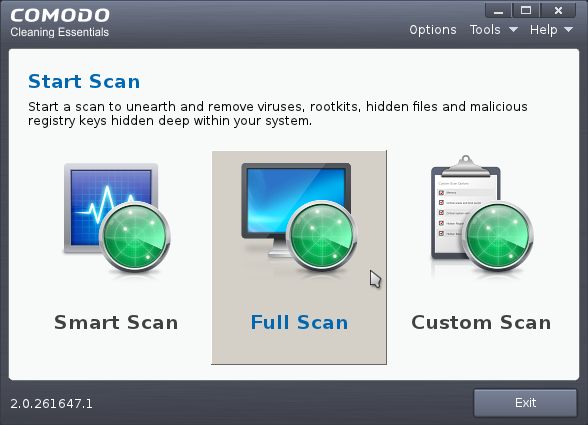
The application will check whether any updates are available for the virus database before commencing the scan. If available, it will first update the local virus database.
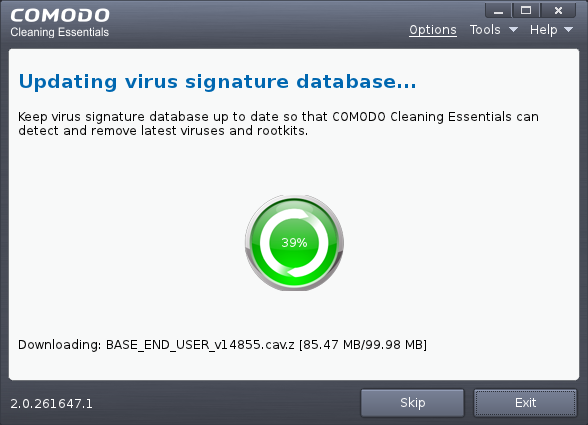
The application will start scanning your system and the progress will be displayed.
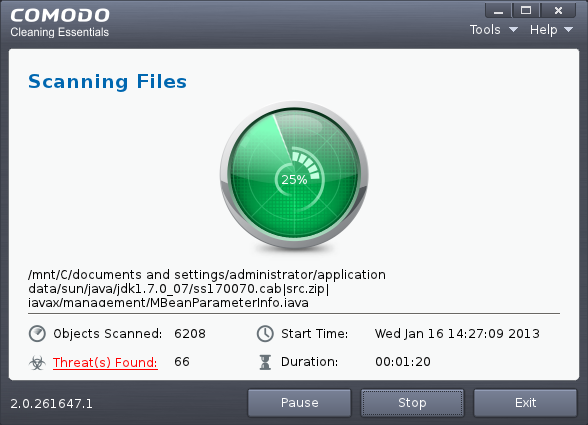
During the course of scanning, if you want to see details on the threats detected so far, click 'Threat(s) Found' link. A results window with the threats identified thus far will be displayed.
The Results
On completion of scanning, the 'Finished' dialog will be displayed.
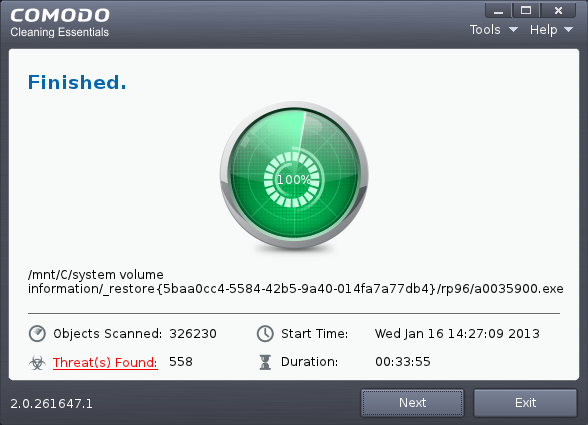
2. Click 'Next' to view the results.
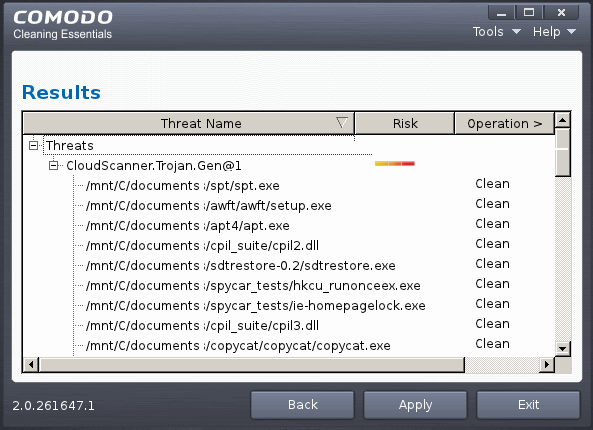
- If malicious executables are discovered on the scanned areas, the 'Results' window displays the list of those items (Viruses, Malware and so on).
| Tip: You can sort the scan results by alphabetical order by clicking the 'Threat Name' column header. Similarly you can sort the scan results based on the risk level by clicking the 'Risk' column header. |
The 'Results' window allows you to quarantine and later remove, ignore the threat if it is a safe file or to submit it as a false positive to Comodo if you are sure about the authenticity of the file. The default operation is 'Clean', that means CCE will clean the threat if a disinfection routine is available for it, else, will move it to quarantine.
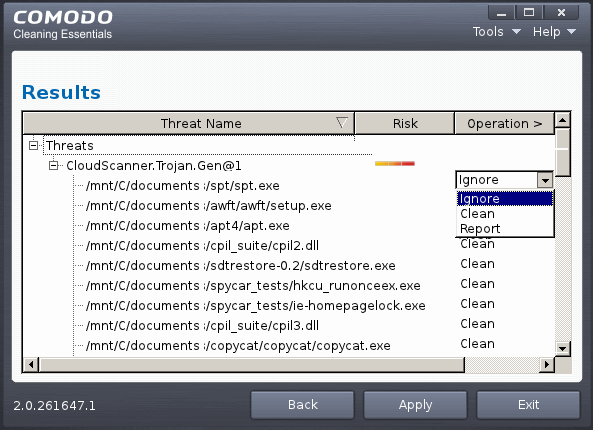
- To clean a threat, click on the entry under the Operations column and select 'Clean'. The file will be disinfected or moved to quarantine upon applying the operation. You can later remove the file from your system from the 'Quarantined Items' interface. Refer to Managing Quarantined Items for more details.
- To ignore a threat if you consider the file is safe, click on the entry under the Operations column and select 'Ignore'.
- To report threat as a false-positive result, click on the entry under the Operations column and select 'Report'. The file will be sent to Comodo. Experts in Comodo will analyze the file and add it to whitelist, if found safe.
- To apply a common operation to all the entries in the list, click on the Operations column header and select the required action.
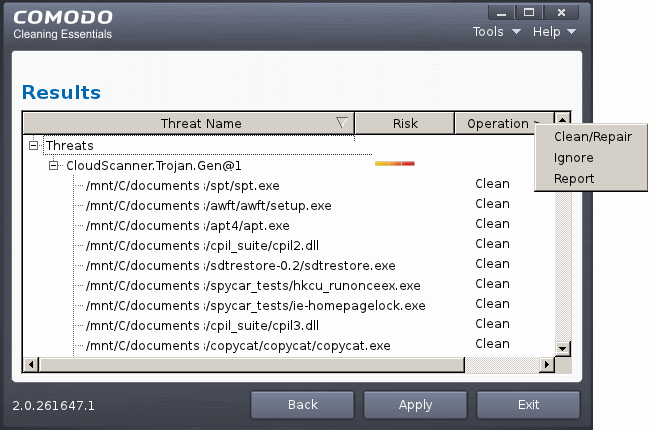
3. Click 'Apply' to apply the selected operations to the threats. The selected operations will be applied and the results will be displayed.
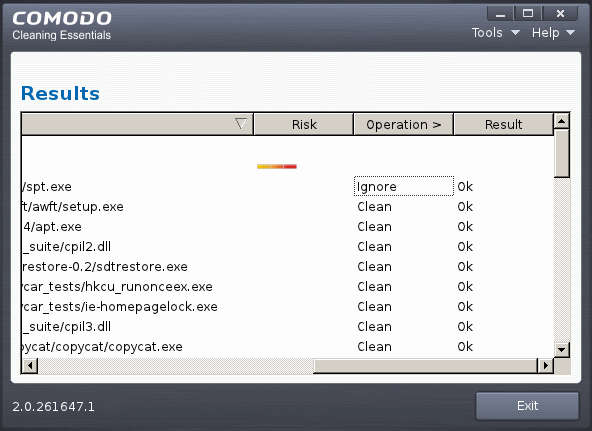
4. Click 'Exit'.
If you have opted to use the text mode, scroll to 'Full Scan' by using the down or up arrow and click the 'Enter' button.
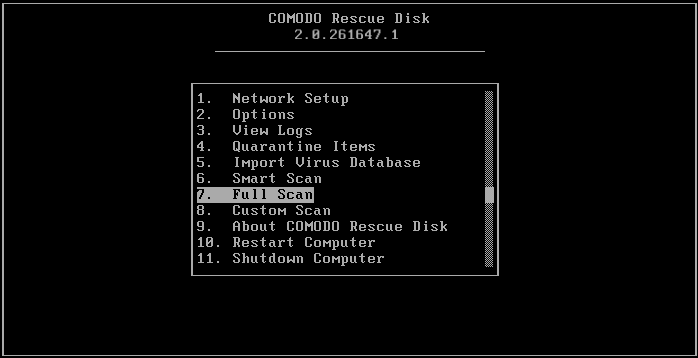
The application will check whether any updates are available for the virus database before commencing the scan. If available, it will first update the local virus database.
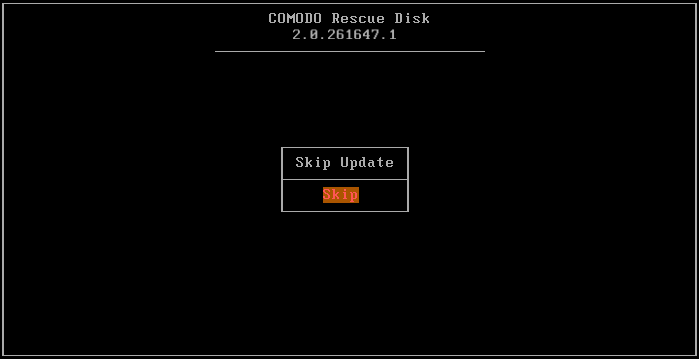
It is advised that you always let the application to update the database as scanning with your virus database up-to-date detects even the zero-hour threats. However, if you do not want the database update at this moment, you can skip this step by clicking 'Enter' button.
The application will start scanning the selected areas of your system and the progress will be displayed. Press 'Ctrl+C' buttons to abort the scan.
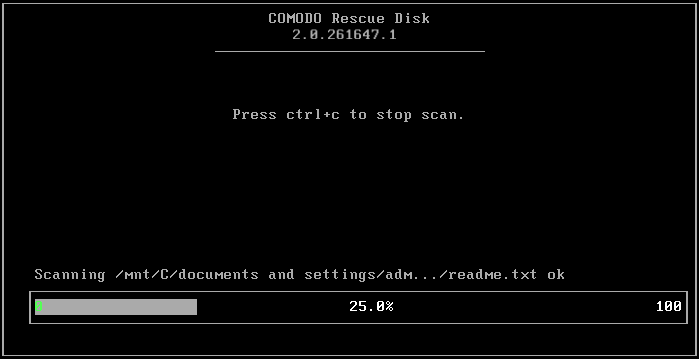
For each and every malware detected by CCE, a 'Choose Action to Virus Detected' screen will be displayed.
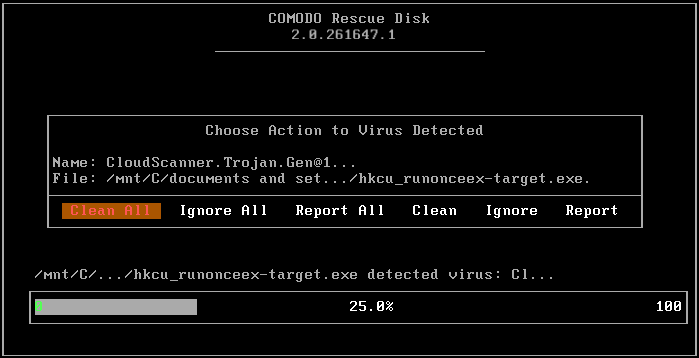
The 'Results' screen allows you to quarantine and later remove, ignore the threat if it is a safe file or to submit it as a false positive to Comodo if you are sure about the authenticity of the file. The default operation is 'Clean All', that means CCE will clean the threat if a disinfection routine is available for it, else, will move it to quarantine. For abnormal system settings, you have the option to either repair the setting or ignore.
- To clean a threat, select 'Clean' using the left or right arrows and press the 'Enter' key. The file will be disinfected or moved to quarantine upon applying the operation. You can later remove the file from your system from the 'Quarantined Items' interface. Refer to Managing Quarantined Items for more details.
- To ignore a threat if you consider the file is safe, select 'Ignore' using the left or right arrows and press the 'Enter' button.
- To report threat as a false-positive result, select 'Report' using the left or right arrows and press the 'Enter' key. The file will be sent to Comodo. Experts in Comodo will analyze the file and add it to whitelist, if found safe.



